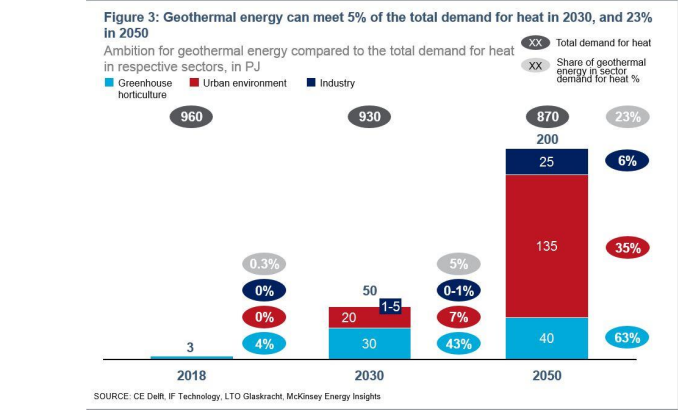Heat accounts for around 40% of UK energy consumption and is responsible for nearly a third of UK greenhouse gas emissions. So we’ll only achieve our commitment to net zero by 2050, and the UK’s interim target of a 78% cut in greenhouse gas emissions by 2035, if we decarbonise our heat supply.
Geothermal heat is available throughout the UK – there’s no need to import it – and it could easily supply all the renewable, decarbonised heat we need, many times over. It can be harnessed from depths of just a few metres to several kilometres to heat our homes, workplaces and leisure facilities, and to replace fossil fuels in heat-intensive industrial and agricultural processes. And yet only 0.3% of the UK’s heat needs are currently met by geothermal.
It will take commitment to realise geothermal’s potential, but it can be done. In 2018, geothermal supplied just 0.5% of the Netherlands’ heat. But the Netherlands government’s ambitious ‘Geothermal Heat Master Plan’ sets targets for geothermal to meet 5% of the country’s total heat needs by 2030, rising to 23% by 2050. Support in key areas – including government-backed risk insurance schemes, a subsurface research programme to ensure comprehensive geothermal resource mapping across the country, and financial incentives for businesses and government departments – will generate the confidence and investment needed to deliver over 200 petajoules of geothermal heat a year by 2050, with annual savings of some 12 million tonnes of CO2.

Is that really achievable? Well, results so far look promising. In 2020, 6.2 PJ of geothermal heat – enough for 117,500 homes and a saving of 333,000 tonnes of CO2 – were produced in the Netherlands. Not only is that up 10% on the previous year, it’s more than the 2020 target defined in the Master Plan.
And, closer to home, let’s not forget how a similarly ambitious programme of targets and support has transformed the UK offshore wind sector in just over a decade. Off shore wind’s share of annual UK electricity generation increased from 0.8% in 2010 to 13% in 2020, and the UK now has the largest installed capacity of off shore wind in the world – more than 10GW of cumulative installed capacity, with a further 5GW in pre-construction and plans for a further 11GW. The levelised cost of electricity (LCOE) from offshore wind has fallen much faster than anyone had anticipated and was in steep decline compared to that from gas even before the recent hike in gas prices.
Evidence, if it were needed, that where there’s a will, there’s a way.








